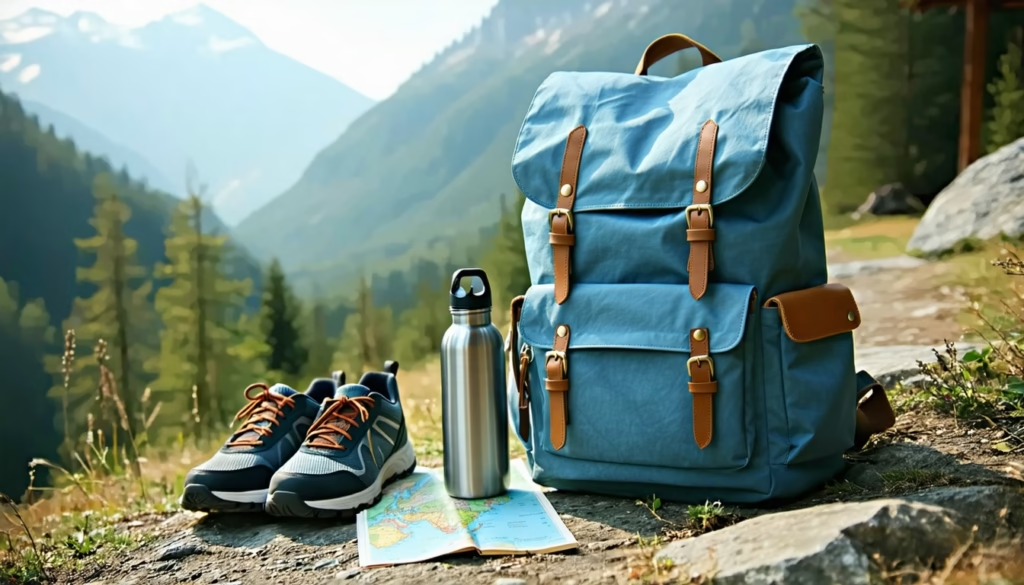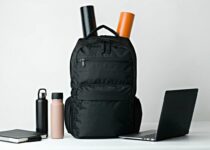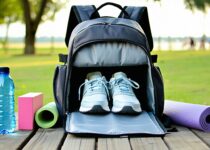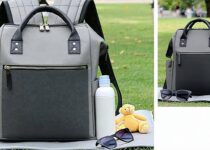Tips To Balance Weight Distribution In A Fully Packed Weekender Backpack

Have you ever felt your shoulder aching halfway through a weekend trip? When we fully pack our favorite weekender backpack, proper weekender backpack weight really makes a difference in comfort and posture. In this guide, we’ll walk through practical tips to balance load distribution in a fully packed weekender pack, so you can head out without that nagging backache.
Here’s our one-sentence promise of value: by the end, you’ll know how to pack smartly, adjust straps perfectly, and keep your load stable whether you’re hopping on a train or hopping a coffee shop couch.
Understand Weight Distribution
Why Balance Matters
Uneven weight can pull you off-center, causing you to lean forward or to one side. That constant shift forces muscles to work overtime. By spreading gear evenly, we keep our spine aligned and reduce fatigue.
Risks Of Poor Loading
- Shoulder strain and soreness
- Lower back pain after a long walk
- Pack sway that throws off our balance
- Increased energy burn from correcting posture
Avoiding these headaches starts with smart placement. Let’s get into the gear and methods that help.
Gather Packing Essentials
Use Packing Cubes
Packing cubes are tiny game-changers. They corral items by weight and size, so we can place each cube exactly where it benefits us most. If you haven’t tried packing cubes in backpack, start here.
Benefits of packing cubes:
- Keep similar-weight items together
- Make unpacking a breeze
- Help maintain shape under compression straps
Prepare Compression Straps
Most weekender packs include side or front compression straps. These straps:
- Squash loose space around cubes
- Lock heavier items in place
- Reduce internal shifting
Before loading, loosen all straps. We’ll tighten them evenly once everything’s inside.
Position Heavy Items Low
Center Around The Spine
Big items like shoes or toiletry kits go at the bottom of the main compartment. That drops the center of gravity closer to our hips, easing shoulder strain. Position the heaviest cube right against the back panel.
Layer Strategically
- Bottom Layer: heavy, flat items (shoe bag, weighty toiletries)
- Middle Layer: bulkier but lighter pieces (rolled jeans, sweaters)
- Top Layer: light, soft items (t-shirts, scarves)
This sandwich method ensures weight stays low, while fragile or compressible items stay cushioned.
Balance Side Compartments
Match Weight On Both Sides
Got side pockets? Use them wisely. If you stash a water bottle on one side, match its weight with snacks or a small book on the opposite side. That simple swap stops the pack from leaning.
Use Side Pocket Tips
- Store items you need fast, like earbuds, in one side
- Mirror the load—if you place a power bank on the left, use a charger on the right
- For expandable pockets, keep heavier goods closer to the main compartment
Matching weight keeps your posture straight and prevents the pack from “wobbling” as you walk.
Optimize Main Compartment
Divide Into Zones
Think of the main compartment as three zones:
- Zone A (back panel) for heaviest items
- Zone B (center) for medium-weight gear
- Zone C (front) for light essentials
Visually mapping this out helps us stay organized and balanced.
Use Dividers Or Pouches
If your pack has internal dividers or a removable pouch, use them to lock cubes in each zone. Some expandable weekender backpack models even include zip-open panels that separate areas neatly.
Use Compression Straps
Tighten Evenly
Once packed, tighten all straps in small, equal increments. Start at the bottom, then middle, then top. That way the load compresses uniformly.
- Bottom Straps: secure bulk at the base
- Middle Straps: lock cubes in the center
- Top Straps: hold down soft layers
Prevent Shifting
Compression straps not only reduce pack volume but also keep heavy items from sliding. If your pack has front-facing straps, cinch them snugly to avoid internal movement.
Adjust Backpack Straps
Set Shoulder Straps
Slide each shoulder strap so the pack rides about two inches below shoulder tops. It should feel snug without digging in.
Fine-Tune Sternum Strap
A sternum strap helps stabilize shoulder straps. Clip it across the chest and adjust height so it sits just below collarbones. If you need a deeper dive on chest-clip style packs, check out our sternum strap backpack guide.
Hip Belt And Load-Lifter Straps
Many weekender backpacks include a hip belt. Fasten it flush against our top hip bones. If there are load-lifter straps at the top of the shoulder straps, pull them at a 45-degree angle toward the pack.
| Component | Purpose | Adjustment Tip |
|---|---|---|
| Shoulder Straps | Support main load | Tighten until the pack hugs our back snugly |
| Sternum Strap | Stabilize shoulders | Clip at chest height, adjust tension lightly |
| Hip Belt | Transfer weight to hips | Center on hip bones, buckle firmly but comfortably |
Test And Fine-Tune
Wear And Walk Around
Put the pack on and walk a few steps. Does it sway? Do you feel any hotspots? If yes, pause and tweak strap tension or switch cube positions.
Make Small Moves
Sometimes shifting just one packing cube a few inches can fix a major lean. Be patient and test after each small adjustment.
FAQs
How Much Weight Should We Carry In A Weekender Backpack?
Aim for no more than 15 percent of our body weight. Keeping loads light makes balanced packing easier and helps prevent strain.
Where Do We Place Heavy Items In The Pack?
Heavy items go low and close to the back panel. That placement lowers the center of gravity and eases shoulder load.
Can We Use Any Packing Cubes?
We recommend medium-size cubes that fit snugly in the main compartment. Mixing cube sizes can create voids that allow shifting.
What If Our Backpack Lacks Compression Straps?
Use a removable luggage strap around the entire pack. You can also stuff a rolled sweater along each side to stabilize cubes.
How Tight Should We Fasten Straps?
Straps should be snug but not painful. We tighten incrementally, testing fit with each pull to avoid overcompression.
Should We Adjust Straps On The Move?
Yes. If the pack begins to sway or dig in, stop and adjust shoulder and sternum straps before continuing.
Can A Load Be Too Even?
A perfectly even load that’s too light may bounce. Always balance weight with snug packing so everything stays secure.
Conclusion
Balancing weight distribution in a fully packed weekender backpack doesn’t have to feel like rocket science. By grouping gear by weight, using cubes, and tuning straps, we keep our spine happy and energy high on every trip.
Next time you pack, try these steps one at a time—test the fit, walk around, and adjust until it feels just right. Here’s to comfortable, well-balanced adventures!


